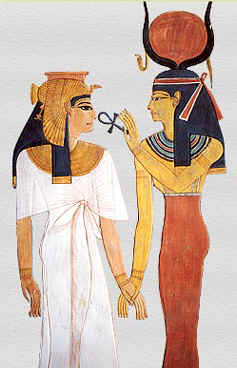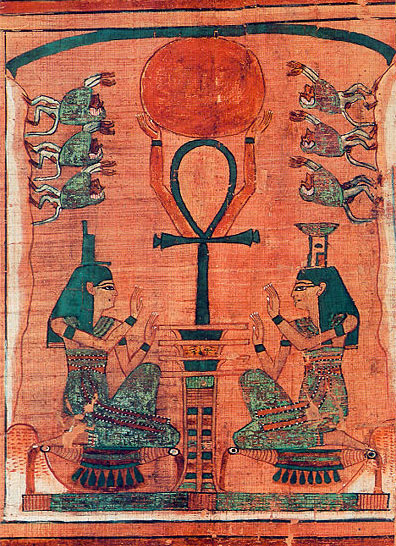-
Content count
3,167 -
Joined
-
Last visited
-
Days Won
10
Posts posted by Mark Foote
-
-
On 3/31/2025 at 5:11 PM, Jenn said:Shoot, I was too slow:
avoiding me now
look inside they said! screw that,
it's scary in thereso, just let it be
the world, others, the future,
that pustulous zit
that pustulous zitwill remain when worlds are gone
Away, scullion!
(“Away, you scullion! you rampallian! you fustilarian! I'll tickle your catastrophe.”
― Shakespeare, Henry IV, Part Two)
-
22 hours ago, S:C said:
light flowers freely
going home way beyond the curtain
leaves only one, none.
Leaves only one, noneWho sits like a wall miles-high?
ghost of Christmas past
-
 1
1
-
-
On 3/25/2025 at 4:32 AM, Rheor said:Hello bums,
I have been through stressful traumatic events lately.
My solar plexus/upper abdomen sometimes contracts like I am doing crunches, this has been quite unpleasant, also accompanied by impending doom like feeling / panic feeling (perhaps from trauma, adrenals).
My life has been messy, I am actively working towards balance.
I was wondering if there would be any suggestion as for recovery.
If anything comes to mind, feel free to let me know.
Thank you
I'm working on something about the interface between physiology/kinesthesiology and a peculiar kind of ease, it's long and I'm not at all sure it will help, but I'm guessing the larger picture might:
Studies made in the 1940’s established that the discs of the lumbar spine cannot, on their own, withstand the pressure of lifting significant weight without rupture.
In the 1950’s, D. L. Bartelink concluded that pressure in the “fluid ball” of the abdominal cavity takes load off the structure of the spine when weight is lifted (“The Role of Abdominal Pressure in Relieving the Pressure on the Lumbar Intervertebral Discs”; J Bone Joint Surg Br. 1957 Nov; 39-B(4):718-25). The pressure in the “fluid ball” is induced by activity in the abdominal muscles, and Bartilink was able to establish that in weight lifting, the pressure induced is proportional to the weight lifted.
Bartelink theorized that animals (as well as humans) make use of pressure in the “fluid ball” of the abdominal cavity to protect the spine, and he noted that breathing can continue even when the abdomen is tensed:
Animals undoubtedly make an extensive use of the protection of their spines by the tensed somatic cavity, and probably also use it as a support upon which muscles of posture find a hold…
Breathing can go on even when the abdomen is used as a support and cannot be relaxed.
(ibid)
In the 1980’s, Gracovetsky, Farfan and Lamay suggested that in weight lifting, the abdominals work against the extensor muscles of the spine to allow the displacement of the fascial sheet behind the sacrum and spine:
If this interpretation is correct, it would partly explain why the abdominal muscles work hard during weight-lifting. They apparently work against the extensor muscles. Futhermore their lever arm gives them considerable effect. In fact, we propose that the effect of the abdominal muscles is two-fold: to balance the moment created by the abdominal pressure (hence, the abdominal muscles do not work against the weight lifter) and to generate abdominal pressure up to 1 psi, which would help the extensors to push away the fascia.
It is essential that the supraspinous ligament and the lumbodorsal fascia be brought into action to permit weight lifting without disk or vertebral failure. … It must be kept in mind that in some circumstances ligament tension may reach 1800 lb., whereas no muscle can pull as hard.
(Gracovetsky, S., Farfan HF, Lamay C, 1997. A mathematical model of the lumbar spine using an optimal system to control muscles and ligaments. Orthopedic Clinics of North America 8: 135-153; bracketed added)
Dr. Rene Cailliet summarized these findings:
In the Lamy-Farfan model the abdominal pressure is considered to be exerted posteriorly against the lumbodorsal fascia, causing the fascia to become taut…. thus relieving the tension upon the erector spinae muscles.
(“Low Back Pain Syndrome”, ed. 3, F. A. Davis Co., pp 140-141
Farfan, Lamay and Cailliet referred to the “lumbodorsal fascia”. That fascia is now more commonly referred to as the “thoracolumbar fascia”.
There may be another factor at work in the stretch of the thoracolumbar fascial sheet. Behind the sacrum, the fascia can be stretched rearward by the mass of the extensor muscles as they contract. As H. F. Farfan noted:
There is another peculiarity of the erector muscles of the spine. Below the level of the fifth lumbar vertebra, the muscle contracts in a compartment enclosed by bone anteriorly, laterally, and medially. Posteriorly, the compartment is closed by the lumbodorsal fascia. When contracted, the diameter of the muscle mass tends to increase. This change in shape of the muscle may exert a wedging effect between the sacrum and the lumbodorsal fascia, thereby increasing the tension in the fascia. This may be one of the few instances where a muscle can exert force by pushing.
(“Mechanical Disorders of the Low Back”, H. F. Farfan;1973 Lea & Febiger; p 183)
Farfan mentions a “wedging effect” on the “lumbodorsal fascia” caused by the mass of the extensor muscles as they contract. That wedging effect may be augmented by stretch provided by the various muscle groups that attach to the thoracolumbar fascia behind the sacrum, among them the hamstring, gluteous, transverse abdominus, serratus, and latissimus dorsi muscle groups.
The sacrotuberous ligaments that attach at the sacrum and at the iliac tuberosities on each side of the bottom-front of the pelvis may also play a role:
At the base of the lumbar spine all of the layers of the thoracolumbar fascial sheet fuse together into a thick composite that attaches firmly to the posterior superior iliac spine and the sacrotuberous ligament.
(J Anat. 2012 May 27;221(6):507–536. doi: 10.1111/j.1469-7580.2012.01511.x)
The iliolumbar ligament(s) also appear to fuse with the thoracolumbar fascia, behind their attachments to the spine (ibid). The iliolumbar ligaments are four ligaments in two pairs, one pair running vertically between the fourth lumbar vertebrae and the pelvis, the other pair running horizontally between the fifth lumbar vertebrae and the pelvis. The ilio-lumbar ligaments provide support to the base of the spine in the flexion and extension of the spine with the movement of breath.
My guess is that a cross-legged posture exacerbates the shearing stress on vertebrae of the lower spine in the movement of breath, and that the free location of consciousness can lead the balance of the body in activity to relieve that stress.
Critical to the relinquishment of willful activity in the body is the recognition that the ligaments of the body can regulate muscular activity. In research done at the close of the 1990’s, the sacroiliac ligaments were shown to regulate activity in the gluteous muscles and the muscles of the lower spine (Indahl, A., et al., “Sacroiliac joint involvement in activation of the porcine spinal and gluteal musculature”, Journal of Spinal Disorders, 1999. 12[4]: p. 325-30).
The stretch allowed by a ligament is slight (less than about 6% of the total length of the ligament), and yet the study by Indahl and associates suggests that even a slight stretch may influence muscular activity.
I would say based on my own experience that other ligaments of the body can also regulate activity in associated muscle groups.
The metaphors Gautama offered for the initial states of concentration speak to the role of “one-pointedness of mind” in engaging the stretch of particular ligaments. The ligaments in turn regulate reciprocal activity in various muscle groups that attach to the thoracolumbar fascial sheet, including the transverse abdominals and the spinal extensors, and thereby control aspects of the stretch and possible displacement of the fascial sheet.
My guess is that even when the spine is not under significant load, stretch in the thoracolumbar fascial sheet may still be engaged to provide support to the structure of the spine, and thereby ease the nerve exits between vertebrae along the sacrum and spine. The free occurrence of consciousness in the body I believe depends in part on such ease.
Gautama’s mindfulness included mindfulness of a feeling of ease, a feeling of ease that followed relaxation in inhalation and exhalation. In the first two concentrations that Gautama described, that ease was accompanied by a feeling of zest, or energy.
In my experience, the feeling of ease that enters into mindfulness is the feeling of ease associated with activity of the body by virtue of the location of consciousness. Activity of the body can follow automatically as the location of consciousness leads the balance of the body. Automatic activity of the body by virtue of the location of consciousness has a feeling of ease, and initially a feeling of energy as well.
Gautama spoke of the extension of the feeling of ease, an extension such that “there is not one particle of the body that is not pervaded by this… ease”. He used the words “steeps, drenches, fills, and suffuses” to describe how the feeling of ease pervades the body, indicating that the feeling is accompanied by a fluid sense of gravity.
The extension Gautama described maintains an openness of the body to the placement of consciousness at any point, through a relaxed extension of the feeling of ease together with a calm experience of the sense of gravity.
There are illustrations of some of the anatomy in the last part of my pdf, A Natural Mindfulness.
-
On 3/22/2025 at 8:10 PM, Nungali said:< deleted >
Like I always said, < deleted >
-
22 hours ago, Lairg said:As below, so above.
They said to Him: Shall we then, being children,
enter the Kingdom? Jesus said to them:
When you make the two one, and
when you make the inner as the outer
and the outer as the inner and the above
as the below, and when
you make the male and the female into a single one,
so that the male will not be male and
the female (not) be female, when you make
eyes in the place of an eye, and a hand
in the place of a hand, and a foot in the place
of a foot, (and) an image in the place of an image,
then shall you enter [the Kingdom].(The Gospel According to Thomas, coptic text established and translated by A. Guillaumont, H.-CH. Puech, G. Quispel, W. Till and Yassah ‘Abd Al Masih, pg 18-19 log. 22, ©1959 E. J. Brill; emphasis added)
So he abides fully conscious of what is behind and what is in front.
As (he is conscious of what is) in front, so behind: as behind, so in front;
as below, so above: as above, so below:
as by day, so by night: as by night, so by day.
Thus with wits alert, with wits unhampered, he cultivates his mind to brilliancy.
(Sanyutta-Nikaya 51.12; tr. Pali Text Society vol. V p 235; emphasis added; expanded, SN 51.20)
-
On 3/23/2025 at 11:03 AM, Apech said:
There is such a difference between simple proper food and slop. They are almost like totally different things.But why are we encouraged to eat slop? Who benefits?
Who are the slop merchants?
RIP David Crosby
-
 1
1
-
 1
1
-
-
-
21 hours ago, stirling said:This is first jhana. The jhanas are activities until their is emptiness (4th jhana). No activity will ever be the cause of enlightenment. One must drop objects of meditation to even get a glimpse of what is being pointed at. Luckily, that happens naturally to most people in meditation, though they may miss it entirely if it hasn't been pointed to. Nirsagadatta Maharaj points to it over and over again.
It is being, without doing. It is stillness, presence, awareness of the whole field of experience, with no thought or self that anything could be different.
Thanks for the Nisargadatta quotes, those are wonderful.
And now for something completely different and yet I hope relevant, from the piece I'm currently writing:
Why the emphasis on the breath? As I wrote previously:
There’s a frailty in the structure of the lower spine, and the necessity of breath can place the point of awareness in such a fashion as to engage a mechanism of support for the spine, often in stages.
(Shunryu Suzuki on Shikantaza and the Theravadin Stages, edited)
The exact nature of the frailty of the lower spine and the precise mechanism of support I have gleaned from the medical literature.
Studies made in the 1940’s established that the discs of the lumbar spine cannot, on their own, withstand the pressure of lifting significant weight without rupture.
In the 1950’s, D. L. Bartelink concluded that pressure in the “fluid ball” of the abdominal cavity takes load off the structure of the spine when weight is lifted (“The Role of Abdominal Pressure in Relieving the Pressure on the Lumbar Intervertebral Discs”; J Bone Joint Surg Br. 1957 Nov; 39-B(4):718-25). The pressure in the “fluid ball” is induced by activity in the abdominal muscles, and Bartilink was able to establish that in weight lifting, the pressure induced is proportional to the weight lifted.
Bartelink theorized that animals (as well as humans) make use of pressure in the “fluid ball” of the abdominal cavity to protect the spine, and he noted that breathing can continue even when the abdomen is tensed:
Animals undoubtedly make an extensive use of the protection of their spines by the tensed somatic cavity, and probably also use it as a support upon which muscles of posture find a hold…
Breathing can go on even when the abdomen is used as a support and cannot be relaxed.
(ibid)
In the 1980’s, Gracovetsky, Farfan and Lamay suggested that in weight lifting, the abdominals work against the extensor muscles of the spine to allow the displacement of the fascial sheet behind the sacrum and spine:
If this interpretation is correct, it would partly explain why the abdominal muscles work hard during weight-lifting. They apparently work against the extensor muscles. Futhermore their lever arm gives them considerable effect. In fact, we propose that the effect of the abdominal muscles is two-fold: to balance the moment created by the abdominal pressure (hence, the abdominal muscles do not work against the weight lifter) and to generate abdominal pressure up to 1 psi, which would help the extensors to push away the fascia.
It is essential that the supraspinous ligament and the lumbodorsal fascia be brought into action to permit weight lifting without disk or vertebral failure. … It must be kept in mind that in some circumstances ligament tension may reach 1800 lb., whereas no muscle can pull as hard.
(Gracovetsky, S., Farfan HF, Lamay C, 1997. A mathematical model of the lumbar spine using an optimal system to control muscles and ligaments. Orthopedic Clinics of North America 8: 135-153; bracketed added)
Dr. Rene Cailliet summarized these findings:
In the Lamy-Farfan model the abdominal pressure is considered to be exerted posteriorly against the lumbodorsal fascia, causing the fascia to become taut…. thus relieving the tension upon the erector spinae muscles.
(“Low Back Pain Syndrome”, ed. 3, F. A. Davis Co., pp 140-141
Farfan, Lamay and Cailliet referred to the “lumbodorsal fascia”, now more commonly referred to as the “thoracolumbar fascia”.
My guess is that a cross-legged posture exacerbates the shearing stress on vertebrae of the lower spine in the movement of breath, and that the free location of consciousness can lead the balance of the body in activity to relieve that stress.
Critical to the relinquishment of willful activity in the body is the recognition that the ligaments of the body can regulate muscular activity, In research done at the close of the 1990’s, the sacroiliac ligaments were shown to regulate activity in the gluteous muscles and the muscles of the lower spine (Indahl, A., et al., “Sacroiliac joint involvement in activation of the porcine spinal and gluteal musculature”, Journal of Spinal Disorders, 1999. 12[4]: p. 325-30).
The stretch allowed by a ligament is slight (less than about 6% of the total length of the ligament), and yet the study by Indahl and associates suggests that even a slight stretch may influence muscular activity.
I would say based on my own experience that other ligaments of the body can also regulate activity in associated muscle groups.The metaphors Gautama offered for the initial states of concentration speak to the role of “one-pointedness of mind” in engaging the stretch of particular ligaments. The ligaments in turn regulate reciprocal activity in various muscle groups that attach to the thoracolumbar fascial sheet, including the abdominals, and thereby control aspects of the stretch and displacement of the fascial sheet.
My guess is that even when the spine is not under significant load, stretch in the thoracolumbar fascial sheet may still be engaged to provide support to the structure of the spine, and thereby ease the nerve exits between vertebrae along the sacrum and spine. The free occurrence of consciousness in the body I believe depends in part on that ease.
In a cross-legged posture, the necessary ease can perhaps be brought about in stages, as in the concentrations that Gautama detailed."The one who has fully investigated himself, the one
who has come to Understand, will never try to interfere
with the play of Consciousness."
- Nisargadatta Maharaj
-
 1
1
-
-
7 hours ago, stirling said:
... moving from meditation on an object to "open awareness" (the whole field of experience is the object)...
A key aspect of the bodily self is self-location, the experience that the self is localized at a specific position in space within one's bodily borders (embodied self-location).
(Journal of Neuroscience 26 May 2010, 30 (21) 7202-7214; https://doi.org/10.1523/JNEUROSCI.3403-09.2010)
The “self… localized at a specific position in space” is generally associated with consciousness. The Indian sage Nisargadatta described the self as “the consciousness in the body”:You are not your body, but you are the consciousness in the body, because of which you have the awareness of “I am”. It is without words, just pure beingness. Meditation means you have to hold consciousness by itself. The consciousness should give attention to itself.
(Gaitonde, Mohan [2017]. Self – Love: The Original Dream [Shri Nisargadatta Maharaj’s Direct Pointers to Reality]; ISBN 978-9385902833)"The consciousness should give attention to itself"--that's "meditation on an object", but also "the experience (of consciousness) localized at a specific position in space within one's bodily borders".
Gautama described the first concentration as like a bath-ball, gathered out of soap powder scattered in a copper basin and sprinkled with moisture. The bath-ball should be kneaded, he said, until it no longer oozes moisture.
I would say that's returning a presence of mind to the location of consciousness until the presence is steady.
Gautama continued his metaphor by saying, “even so, (a person) steeps, drenches, fills, and suffuses this body with zest and ease… so that there is not one particle of the body that is not pervaded by this lone-born zest and ease”.
The zest and ease that Gautama referred to I believe are the zest and ease born of activity of the body by virtue of the location of consciousness. When the activity of the body in inhalation and exhalation takes place by virtue of the location of consciousness, feelings of zest and ease arise. The suffusion of the body with zest and ease such that "there is not one particle of the body that is not pervaded" by zest and ease is "the whole field of awareness as the object", at least as far as consciousness in the body.
Ptahhotep east wall, 25th century B.C.E.
-
On 3/20/2025 at 4:29 PM, Lairg said:In my experience the ankh can be used to manage energy flows.
I once used that on two women that were emotionally attacking me. I used an ankh to reverse each flow. One woman was tough and unknowingly attacked herself for two days before giving up.
The use of an ankh as a device is implicit in the above depiction.
Note also that the goddess has two right hands while the other female has two left hands
That's interesting about the two right and two left hands--didn't notice that!
-
On 3/18/2025 at 9:29 PM, Lairg said:That is a highly significant image. Other than statues the ancient Egyptians very rarely depicted a front-facing image
Here we have the four pillars of heaven looking straight at the human observer. What does that mean about the significance/functionality of the human?
Is the image an invitation to take on the ball of light above the pillars?
I would say yes. The illustration, by the way, is from the "Papyrus of Ani” manuscript of the Egyptian Book of the Dead.
Material I have excised from my latest writing, so that I will not be accused of harboring aliens of the interstellar variety in my non-existent basement:
I would guess that the scene is intended to depict forces inside the torso, with the central pillar representing the sacrum and the line at the top of the scene representing the diaphragm.
Resting on top of the pillar is a symbol referred to as “the ankh”, which dates back in Egypt to about 30 centuries before the common era. From Wikipedia:
There is little agreement on what physical object the sign originally represented [Gordon & Schwabe 2004, pp 102–103]. Many scholars believe the sign is a knot formed of a flexible material such as cloth or reeds [ibid], as early versions of the sign show the lower bar of the ankh as two separate lengths of flexible material that seem to correspond to the two ends of the knot [Wilkinson 1992, p 177].
(Wikipedia, “Ankh”)
My guess is that the ankh in the “Papyrus of Ani” manuscript illustrates a placement of “the base of consciousness” that functions like the spring in Gautama’s pool-of-water metaphor*, a resilient placement that balances activity in front of the abdomen and behind the sacrum, except with special emphasis on the horizontal iliolumbar ligaments, the two paired ligaments being symbolized by the crossbar of the ankh.
The material the goddesses kneel on would seem to represent the sacrotuberous ligaments. The sacrotuberous ligaments attach to the thoracolumbar fascial sheet:
At the base of the lumbar spine all of the layers of the thoracolumbar fascial sheet fuse together into a thick composite that attaches firmly to the posterior superior iliac spine and the sacrotuberous ligament.
(J Anat. 2012 May 27;221(6):507–536. doi: 10.1111/j.1469-7580.2012.01511.x)
The two goddesses offer support, one hand to the top of a structure that resembles the sacrum, the other hand angled toward the disk of the sun. The hands at the top of the sacrum would represent the support of the horizontal iliolumbar ligaments to the base of the lumbar spine, while the hands toward the sun would represent the support of the vertical iliolumbar ligaments to the vertebrae upward along the spine. One knee of each goddess seems to offer support near the bottom of the sacrum.
The disc of the sun held by the arms of the ankh I would guess represents a free and pure consciousness, pure in that automatic activity of the body is solely by virtue of the location of consciousness (and not by habit or volition), and free in that consciousness takes place anywhere within the body.
The upturned hands, balance on the balls of the feet, and extended tails of the baboons moving up the inside of the walls I believe speak to the stretch of the thoracolumbar fascia through the relaxed weight of the arms, the legs, and the head. They may also indicate that the lever arm of the transverse abdominals is in use against the extensors of the lumbar spine to allow stretch in the ligaments of the spine and rearward displacement of the fascial sheet as appropriate.
* "… imagine a pool with a spring, but no water-inlet on the east side or the west side or on the north or on the south, and suppose the (rain-) deva supply not proper rains from time to time–cool waters would still well up from that pool, and that pool would be steeped, drenched, filled and suffused with the cold water so that not a drop but would be pervaded by the cold water; in just the same way… (one) steeps (their) body with zest and ease… "
(AN 5.28, © Pali Text Society Vol. III p 18-19)-
 1
1
-
-
On 3/19/2025 at 3:58 AM, old3bob said:and there are all the local, county, state, national and international "accidents" of various types that were and are largely preventable if not for sloppy trends from A-Z for most everything from A-Z! (with serious results on our lives and the environment, for instance industrial fires, oil tanker disasters, train wrecks, airline crash's, many endlessly delayed infrastructure problems with roads, bridges, buildings, lead water pipes, forever compounds, trash in the oceans, etc. etc...)
-
 1
1
-
-
-
On 3/14/2025 at 8:42 PM, Lairg said:The first format of mediation I was taught, when augmented by "advanced techniques", was a mantra that made a sequence of sounds that progressed from the chakra immediately above the head, to the upper head chakra, throat, upper heart, lower heart and finally upper solar plexus.
The sequence harmonized each of the relevant chakras and was sufficient to move my awareness into a timeless zone. "Goodness, is that the time already?"
That was superseded by other techniques that just appeared while I was meditating
Speaking of upper solar plexus:
Goddess knows best!
-
 1
1
-
-
9 hours ago, stirling said:I dunno, those chaps were before my time. Certainly Reb knew what he was talking about, his book "Being Upright" is a master class in seeing from Wisdom.
Exceptionalism is over-rated. When the whole field of experience is ALREADY enlightened and always has been, how could it possibly matter what a list says?
I picture Stirling sailing his hat down some San Francisco street, total abandon in a brisk breeze.
I did read "Being Upright"--that's his apology for not copping to a problem with Baker Roshi sooner, if memory serves.
I don't know. I think it's confusing to most people, who to trust as a teacher. It's not even straightforward when it comes to subjects like mathematics, because the field of study and the approach can make all the difference, regardless of the teacher's credentials. How much more confusing, when the subject is how best to make use of this life!
If it was as simple as you sometimes make it out to be, Stirling, we'd all know the answer to that one already.
-
On 3/15/2025 at 9:47 AM, doc benway said:now, where is my fan?
I cannot manage without
appreciation
appreciation
for the kind word, sharing thought,
the life on the line
-
 1
1
-
-
On 3/14/2025 at 5:59 PM, stirling said:Maybe it's sort of like this:

I read on your link that the certificate washed up in a box on a shore someplace in Japan. Perhaps it wasn't considered very valuable?
-
We get the Soto Lineage documents, for what it's worth:
https://en.wikipedia.org/wiki/Zen_lineage_charts#Soto_school
Wonder if Baker ever signed off on Reb. Not that Reb needed signing off on!
The Denkoroku lists successors, but as I recall there is one point in the chain where the chain was actually broken. The author of Denkoroku gestured mystically, and all was well!
Maybe that's the spot in the lineage chart on Wikipedia that's a Rinzai master.
Washed up in a box! Will wonders never cease. -
On 3/11/2025 at 11:07 AM, Keith108 said:The galactic web
Infinite smaller pieces
Until nothing left
until nothing left,
can't begin to fathom right
bells and whistles, farts
-
On 3/9/2025 at 1:03 PM, stirling said:
and no other to bequeath it.
That would be why Yuanwu gave Huqiu Shaolong an enlightenment certificate? -
On 3/9/2025 at 3:30 PM, Lairg said:There are accounts of the assemblage point. Apparently when a human is ready to change consciousness an intentional blow to the assemblage point can trigger the change
https://consciousreminder.com/2016/12/18/assemblage-point-seat-consciousness/
https://thefourwinds.com/moving-assemblage-point/
Interesting point of view. Here's another account of moving consciousness:
… as an experiment, I recommend trying it, sitting in this posture (legs crossed in seated meditation) and trying to feel what it’s like to let your mind, to let the base of your consciousness, move away from your head. One thing you’ll find, or that I have found, at least, is that you can’t will it to happen, because you’re willing it from your head. To the extent that you can do it, it’s an act of letting go–and a fascinating one.
(“No Struggle [Zazen Yojinki, Part 6]”, by Koun Franz, from the “Nyoho Zen” site, parenthetical added)I'm writing a piece I hope to post before too long, that continues in the same vein:
Franz mentioned that “the base of consciousness” might relocate to the center of gravity. Most modern references to the lower dan-t’ian situate it somewhere below and behind the navel, at the approximate center of gravity of the body.
Franz spoke about “letting go” to allow the “base of consciousness” to move away from the head. Gautama spoke about “making self-surrender the object of thought” in order to “lay hold of one-pointedness”, and enter the first concentration:Herein… the (noble) disciple, making self-surrender the object of (their) thought, lays hold of concentration, lays hold of one-pointedness. (The disciple), aloof from sensuality, aloof from evil conditions, enters on the first trance, which is accompanied by thought directed and sustained, which is born of solitude, easeful and zestful, and abides therein.
(SN 48.10, Pali Text Society vol. V p 174)
“Self-surrender” is the abandonment of any exercise of will. Gautama spoke of how the exercise of will could lead to “a station of consciousness”:
That which we will…, and that which we intend to do and that wherewithal we are occupied:–this becomes an object for the persistance of consciousness. The object being there, there comes to be a station of consciousness….But if we neither will, nor intend to do, nor are occupied about something, there is no becoming of an object for the persistance of consciousness. The object being absent, there comes to be no station of consciousness.
(SN 12.38; tr. Pali Text Society SN vol. II p 45)
The exercise of will can station the location of consciousness, and an “act of letting go”, “making self-surrender the object of thought”, can free it.
I would say that the “thought directed and sustained” of the first concentration comes out of necessity, as a presence of mind with “the base of consciousness” is maintained from inhalation to exhalation and from exhalation to inhalation. If a presence of mind is maintained, the natural tendency toward the free location of consciousness draws out “thought directed and sustained”.
... The zest and ease that Gautama referred to I believe are the zest and ease born of activity of the body by virtue of the free location of consciousness. A relaxed presence of mind with the “specific position in space” of “the base of consciousness” can bring such activity and such feelings to light, and the feelings can then be extended such that “there is not one particle of the body that is not pervaded” by them.
A different take, but an assumption similar to that of your second link, that the "seat" of consciousness can move away from the head.
-
On 2/21/2025 at 12:03 AM, stirling said:
As far as real transmission outside of scripture, it happens all the time... Sufis, Hindus, Jains, and even Christians and Jews, amongst a multitude of even those with no formal belief system can come to realization.
I think the experience of the sixth patriarch of Zen was unusual, in that he was said to have turned a corner by virtue of hearing a line from the Diamond Sutra recited by an itinerant priest in the marketplace:Let the mind be present without an abode.
(from the Diamond Sutra, translation by Venerable Master Hsing Yun from “The Rabbit’s Horn: A Commentary on the Platform Sutra”, Buddha’s Light Publishing pg 60)
Lots of stories in the Zen tradition of people being enlightened by a shout or a blow, or by other actions of a master. Some stories of people being enlightened through the presence of a master, without any particular action. Not so many stories of people being enlightened by words as straightforward as those the sixth patriarch heard.
If the transmission does not entail words, is not by means of scripture, is not by virtue of understanding, then how does transmission take place? That is what I am addressing in the post I link to in the OP:
... activity solely by virtue of the free location of consciousness, the hallmark of the fourth concentration, has been conveyed by demonstration in some branches of Buddhism for millennia.
Activity solely by virtue of the free location of consciousness can be demonstrated as action, can be demonstrated as inaction, can be picked up without any words through a kind of a physical intuition. And teachers like Yuanwu's disciple Dahui Zonggao apparently believed that was the only way the teaching could actually be transmitted--he's the one who tried to burn the printing blocks of "The Blue Cliff Record". And yet the sixth patriarch seems to have picked it up through a fortuitous meeting of personal experience and the spoken word.
Learn something every day, says here that "Yuanwu gave Huqiu Shaolong an enlightenment certificate that is the oldest surviving document written by a Chan master." (https://emuseum.nich.go.jp/detail?langId=en&webView=&content_base_id=100223&content_part_id=0&content_pict_id=0)"Available now, for a limited time only!"--"Big Mind" certification. What we've come to, I guess.
-
 1
1
-
-
On 2/20/2025 at 6:55 PM, Lairg said:It is commonplace that dreams usually need to be recorded immediately upon waking as the memory fades very quickly.
It may be that while asleep we are usually out of the body, thus operating with the mind but without the brain connection.
If the concept of parallel universes/timelines is considered, the brain is largely restricted to this 3D timeline, but the mind may be on several streams at once
Are you familiar with Olaf Blanke's work? He's one of the authors of this experiment:
The gentleman in the video describes an experiment where they actually induced an out-of-body experience in subjects who volunteered for the experiment.
One conclusion Blanke has drawn from his study of out-of-body experiences in the medical literature is that natural out-of-body experiences may be the result of damage or impairment in the connections of certain senses associated with balance, principally occuloception, proprioception, equalibrioception, and graviception. The eyes especially have a tight connection with the sense of the location of the consciousness associated with the self, as demonstrated in the full-body illusion in the video.Perhaps it's possible to alter the coordination of those senses and induce an out-of-body experience without damage to any sense organs. That may have been what Robert Monroe did when he induced his own out-of-body experiences, as recorded in "Far Journeys".
-
On 2/17/2025 at 3:12 AM, Sherman Krebbs said:calling Dick Tracy...
for a tea and cigarette
there's no mystery
there's no mystery
save that of our existence
as a place in time
-
From last night's PBS Newshour:
Laura Barron-Lopez:
What does the science say about a competitive advantage or lack thereof among transgender girls competing in sports?
Dr. Bradley Anawalt:
Well, the evidence is incomplete on that particular question.
The best data we have really comes from military recruits, people that have been enlisted in the Army or the Air Force. A 2023 study, they have an annual test where they undergo a 1.5-mile timed run. They do as many sit-ups as they can in a minute, as many push-ups as they can in a minute.
They had data from these individuals before they started gender-affirming hormone therapy, and then each year after that, for up to four years.
Laura Barron-Lopez:
Anawalt says, even though the performance of trans women dropped after starting gender-affirming hormones, it took two years for their running times to fall in line with women assigned female at birth. The sit-up scores of trans women stayed higher until four years after they started hormones, but their push-up scores remained higher the entire time.
Dr. Bradley Anawalt:
What we don't really know is, what are the effects in elite athletes? Most of the data is from people that are not elite athletes.
And the other thing that we don't know is, how long and how significant are these changes over time?
... Laura Barron-Lopez:
You have said we're never going to be able to answer the fundamental question about fairness when talking about this issue. Why exactly do you say that?
Dr. Bradley Anawalt:
It comes back to this conflict between these two important values that I alluded to, the fairness and then the desire to allow everybody to participate in sports.
And whenever you do that, there are going to be inherent inequalities between people. And how do we limit those inequalities and yet allow everybody to play? I really don't think that science is going to give us a perfect answer on this. We can get better and better evidence and data about the effects of gender-affirming hormone therapy on athletic performance.
But, ultimately, this is going to be a question for the general public to try to balance out those two very important issues. And it's also going to be an opportunity for us to ask the question, just how important our sports at the very highest level in our society?
This whole debate rages around sports because of how much we venerate sports and, at this point in time, what an economic engine it's become.
https://www.pbs.org/newshour/show/what-science-tells-us-about-transgender-athletes
I particularly liked that last part, ""how do we limit those inequalities and yet allow everybody to play?"-
 1
1
-











The Totally Boring News Thread
in The Rabbit Hole
Posted · Edited by Mark Foote
The local scene--nothing happening, so boring!